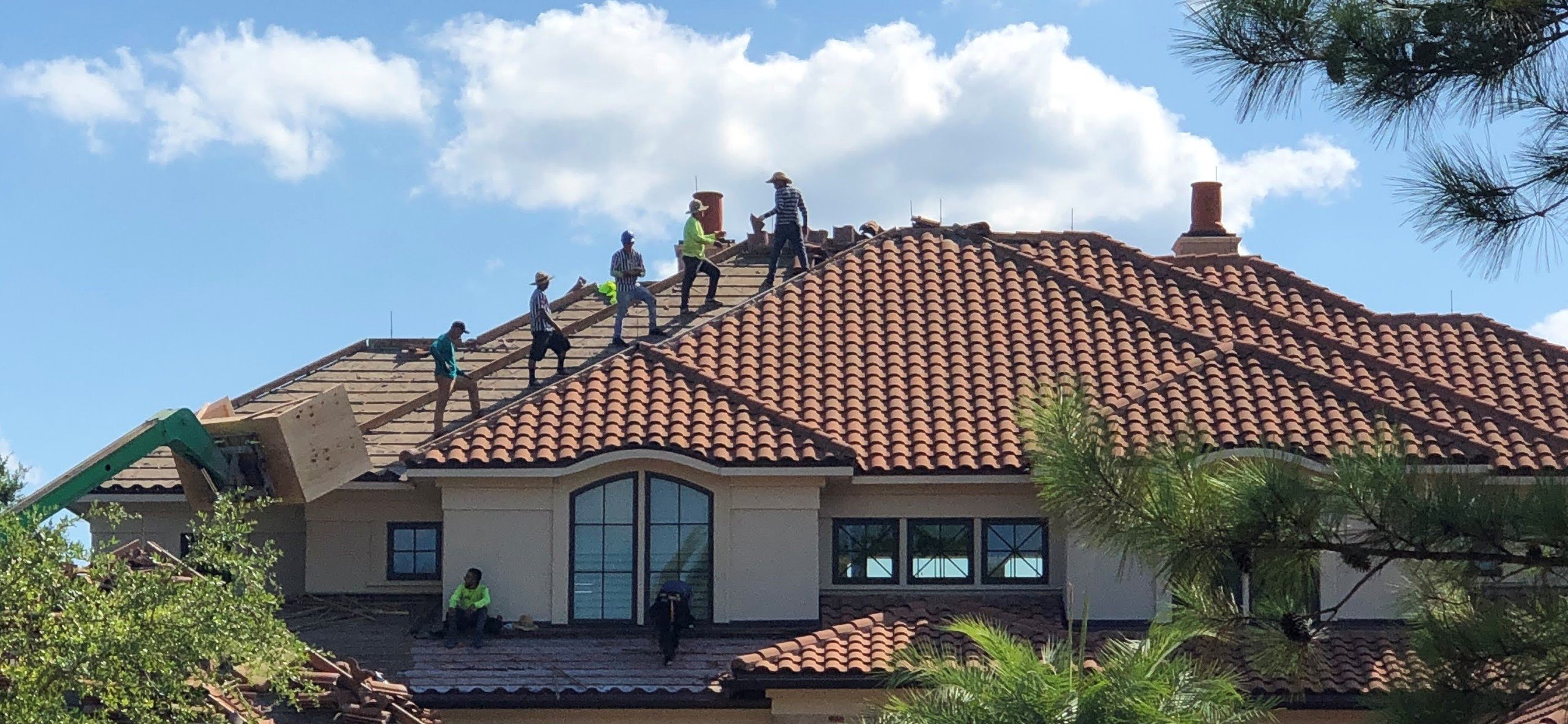Step-by-Step Overview to Locating the Right Roofing Companies in Gainesville
Step-by-Step Overview to Locating the Right Roofing Companies in Gainesville
Blog Article
Ideal Practices for Ensuring Appropriate Roof Covering Air Flow
Making sure appropriate roofing air flow is crucial for the longevity and efficiency of a roof. A well balanced intake and exhaust air vent ratio, generally 1:300, plays a crucial role, with intake vents ideally put at the reduced side of the roof for trendy air entrance and exhaust vents at the top for cozy air leave. Routine inspections to determine clogs and maintain clear airflow are vital. Additionally, keeping insulation away from vents is essential to avoid air flow restriction. Comprehending these foundational aspects sets the phase for more detailed insights right into installment and maintenance methods that can substantially boost your roof's performance.
Understand Air Flow Basics
Effectively understanding air flow essentials is vital for making certain the long life and efficiency of roof. Reliable air flow alleviates wetness build-up and temperature extremes in the attic, both of which can result in considerable architectural damages with time. A well-ventilated roofing aids in protecting against usual concerns such as mold and mildew development, wood rot, and ice dams, which can jeopardize the stability of the roofing materials and the underlying frameworks.
The primary objective of ventilation is to assist in the movement of air, permitting a regular exchange between the indoor and outside atmospheres. This balance is attained with a combination of intake and exhaust vents that work with each other to maintain ideal airflow. Consumption vents, generally located along the eaves or soffits, permit fresh air to enter the attic area, while exhaust vents, typically positioned at or near the roofing system ridge, enable warm, humid air to run away.
Key variables affecting the effectiveness of roofing air flow consist of appropriate positioning, sufficient sizing, and ensuring that both intake and exhaust vents are unhampered. Routine examination and maintenance are critical to identify prospective obstructions, damage, or inefficiencies in the ventilation system, thereby guarding the roof's performance and durability.
Kinds Of Roofing System Vents
Roof covering vents play a critical duty in keeping reliable attic room ventilation and, by expansion, the total wellness of the roof system. Numerous kinds of roof covering vents are readily available, each with distinct benefits customized to certain roof demands.

Soffit vents are mounted under the eaves and work in tandem with roofing vents to ensure a well balanced intake and exhaust system. By enabling cooler air to enter from below, soffit vents assist in the expulsion of warm air with top vents. Gable vents, situated on the exterior wall surfaces of the attic room, deal another efficient remedy, particularly in homes with saddleback roofs.
Analyze Your Current Ventilation

Following, consider the age and condition of your roofing products and air flow parts. Older systems might not follow existing building regulations or may have deteriorated over time, reducing their efficiency. Conduct a complete examination to identify any indications of wear and tear, such as corrosion, damage, or voids that might compromise the system's efficiency.
In addition, measure the attic room temperature and humidity degrees. High temperature levels and humidity can show inadequate air flow.
Setup Best Practices
Reliable installation of roofing air flow systems is critical for making sure optimum efficiency and long life. Proper installation starts with comprehending the particular air flow demands of the structure and the roofing system it covers. This includes determining the right ratio of intake to exhaust vents, generally sticking to the 1:300 regulation, which specifies one square foot of ventilation for every single 300 square feet of attic room flooring room.

The placement of vents is just as vital. Consumption vents should be set up at the roof's reduced edge, commonly in the soffits, to enable cool air to go into. Exhaust vents, on the other hand, need to be set up near or at the roof covering's top to assist in the leave of cozy, damp air. This produces an all-natural air flow that assists keep temperature and wetness equilibrium within the attic room.
Seal all air vent links carefully to avoid air leaks and potential water seepage. Use top notch products try this website and adhere to manufacturer guidelines to make sure resilience and effectiveness. Additionally, integrating ridge vents with baffles can considerably enhance air movement efficiency by avoiding wind-driven rain and snow from going into the attic room.
Ultimately, accurate setup of roof ventilation systems mitigates potential concerns such as mold development, ice dams, and architectural damages, making certain the roof's stability and the structure's general health.
Regular Maintenance Tips
Uniformity in maintenance techniques is basic to making certain the long-lasting efficiency of roofing air flow systems. Throughout these inspections, guarantee that vents are cost-free of debris, nests, and various other blockages that might impede airflow.
Cleaning up the vents is one more important job. Utilize a soft brush or a vacuum cleaner to remove dirt and debris from intake and exhaust vents. Beware not to harm the vent displays or louvers during the procedure. Additionally, inspect the attic space for any type of indicators of water damages, which could compromise the honesty of the roof covering system.
Correct insulation is equally crucial. Guarantee that attic insulation does not obstruct the vents, as this can badly restrict air flow. Rearrange or change it to keep an effective obstacle. if any kind of insulation has actually changed or go now cleared up.
Lastly, replace any type of harmed or missing out on parts promptly. Broken vents, broken shingles, or shabby flashing can all add to inadequate ventilation and must be resolved immediately. Routine upkeep guarantees that the roof covering ventilation system operates ideally, thereby expanding the lifespan of the roofing itself.
Conclusion
Ensuring correct roof air flow is vital for preserving the efficiency and longevity of a roofing system. Adherence to the 1:300 intake and exhaust air vent proportion, combined with the tactical placement of vents, is crucial.
A balanced intake and exhaust vent proportion, commonly 1:300, plays a critical function, with consumption vents ideally positioned at the lower side of the roofing system for awesome air entry and exhaust vents at the optimal for warm air leave. Consumption vents, usually situated along the soffits or eaves, allow fresh air to go into the attic room room, while exhaust vents, frequently located at or near the roof covering ridge, enable hot, damp air to run away.
Soffit vents are mounted under the eaves and work in tandem with roof covering vents to ensure a balanced intake and exhaust system. By permitting cooler air to go into from below, soffit vents facilitate the expulsion of warm air with top vents. Adherence to the 1:300 consumption and exhaust air vent proportion, coupled with the tactical placement of vents, is vital.
Report this page